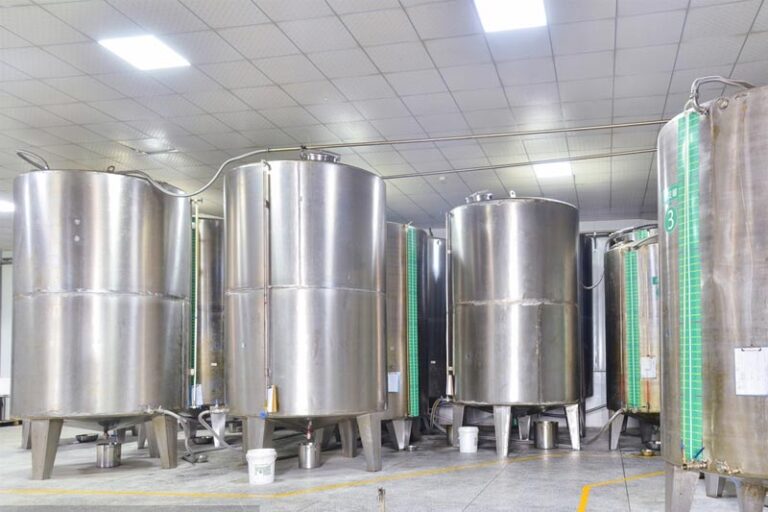Small commercial brewing equipment has become the first choice for more and more entrepreneurs and small breweries. This equipment can not only provide a high-quality brewing experience but also achieve excellent production capacity under limited space and budget. Small winemaking equipment is the ideal choice for hotels, barbecue restaurants, restaurants, bars, and other catering and entertainment venues to produce beer for guests to enjoy directly. These devices can provide sufficient production capacity while maintaining high-standard brewing quality.
Table of Contents

What is small commercial winemaking equipment?
Small commercial brewing equipment refers to the winemaking equipment designed for small wineries, craft bars, restaurants, or small home winemaking studios. The design goals of these devices are to provide relatively small-scale production capacity while ensuring high-quality beer brewing. They usually have compact size, flexible operation methods, and relatively low investment costs, which are very suitable for business scenarios that require small batches of production.
Features of small commercial winemaking equipment:
- Small commercial winemaking equipment is usually tightly designed, occupying less space, and suitable for limited space.
- You can flexibly adjust the production volume of each batch to meet different market demands.
- Modern small winemaking equipment is equipped with automatic temperature control, automatic stirring, and automatic cleaning functions, reducing the need for manual operation.
- Use high -quality stainless steel and other durable materials to ensure the hygiene of the brewing process and the stability of the flavor of beer.
Basic composition of small commercial brewing equipment
Brewhouse system
Brewhouse is the basis of all beer factory systems; it is usually composed of three major containers: malt juice barrels, filter grooves, and beer pots. The malt is mixed with hot water, promoting amylase decomposition into fermented sugar. The produced liquid is called malt juice and is then separated from the solid grain material in the filter groove. Then the ocean juice was transferred to the beer pot, and there was boiling beer to add beer and produce its flavor. There are many types of maltogenic/filter grooves used by small beer plants, including immersion grooves, boiled grooves, and malter filters. Immersion grooves are the most common types because they are simple to use and are very suitable for small and medium-sized beer plants. The boiling slot is used for more complicated brewing processes, while malter filters are more suitable for large beer plants.

Fermenter
After preparing the millet juice, it will be transferred to the fermentation container and starts to convert it into beer. The fermentation container is usually called a fermentation tank or fermentation container, which provides a controllable environment for yeast to convert sugar into alcohol and carbon dioxide. Accurate temperature control and pressure control systems maintain fermentation stability. The size range of these stainless steel containers is from small self-brewed beer equipment to large industrial cans for commercial beer plants. There are many types of fermentation tanks, including open-fermented tanks, closed-fermentation tanks, and cone fermentation tanks. Open fermentation tanks are not common because they are more vulnerable to pollution, but some winemakers prefer to open fermentation tanks because they can produce more complex flavors. Closed fermentation tanks are more common because they are sealed and can control temperature and pressure more accurately. Tone fermentation tanks are the most popular types because they are widely used and can easily harvest yeast and transfer beer.
Cooling and heating system
Storage and maturity
Packaging system
Small commercial winemaking equipment application scenarios
Small commercial brewing equipment is suitable for a variety of commercial environments and scenes due to its flexibility, economy, and high -quality production capacity.
Here are some common application scenarios:
- Ferry Bar is usually committed to providing unique beer flavors and innovative formulas. Small winemaking equipment allows them to brew beer at the bar at the bar, which increases freshness and attractiveness.
- The restaurant uses small brewing equipment to provide its own brewed beer, which can attract customers and increase catering income.
- Family brewing enthusiasts use small equipment to make beer at home to meet personal hobbies and experimental needs.
- Small wineries use micro winemaking equipment for market testing and small-scale production to explore new formulas and market demand.
FAQ
What is small commercial winemaking equipment?
Small commercial brewing equipment is winemaking equipment designed for small wineries, craft bars, restaurants, and family brewing enthusiasts. These devices usually have compact design, high automation, and flexible functions, and can make small, high-quality beer production.
What are the advantages of small commercial brewing equipment?
The initial investment is low, suitable for users with limited budgets, can support a variety of brewing styles and mass production, and meet different needs. A compact design is suitable for limited space. Modern equipment is usually equipped with automated functions to simplify operations and maintenance.
What is the production capacity of small commercial brewing equipment?
The production capacity of small commercial brewing equipment usually ranges from several hundred to thousands of liters. The specific production capacity depends on the scale and configuration of the equipment. For example, a small device may produce 200 to 500 liters of beer per batch.
Do small commercial brewing equipment need special operation training?
Yes, small commercial brewing equipment usually requires special operation training. Although modern equipment is equipped with automated functions, the operator still needs to understand the basic functions and operation processes of the equipment to ensure the correct use and best performance of the equipment.

